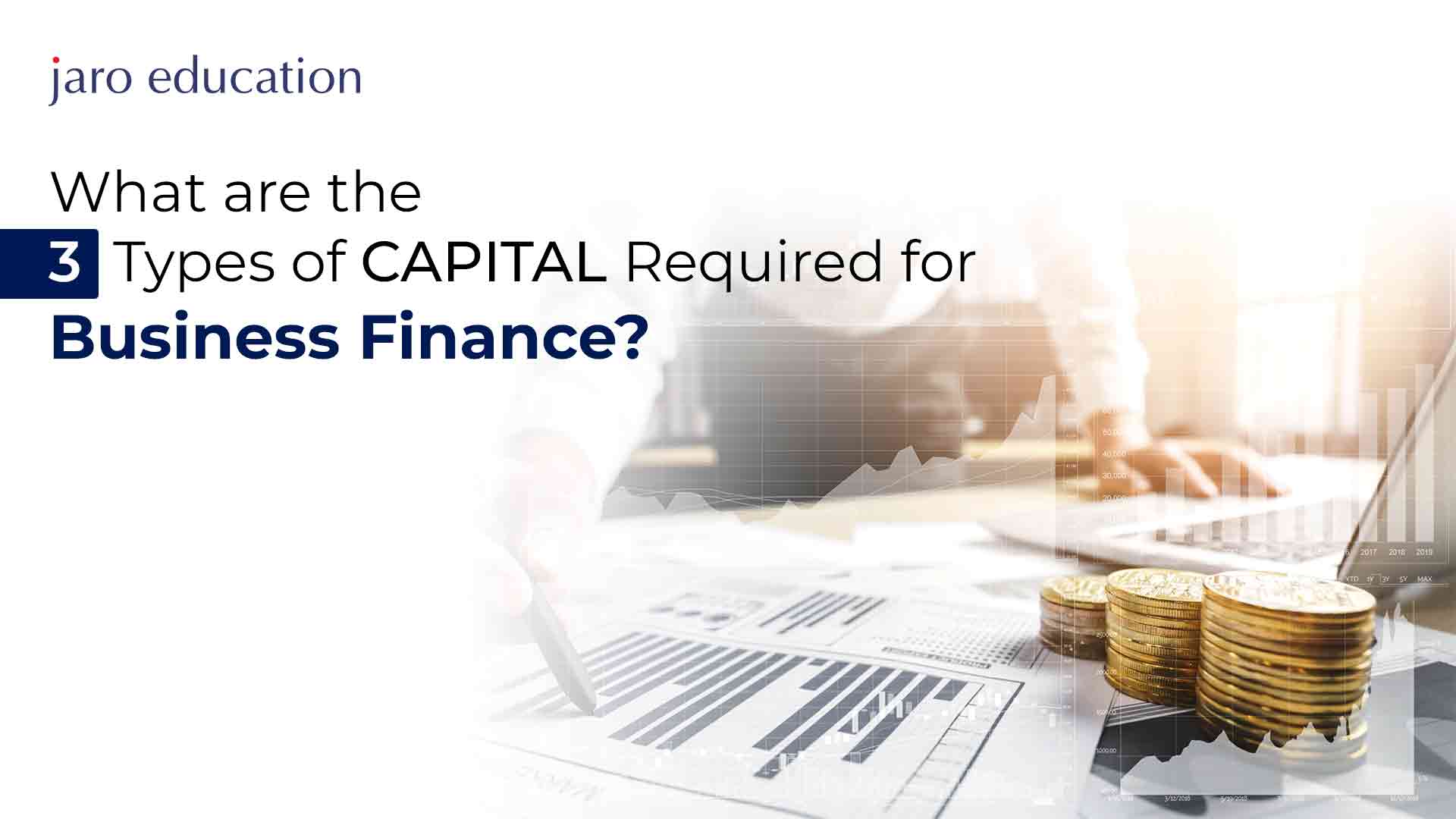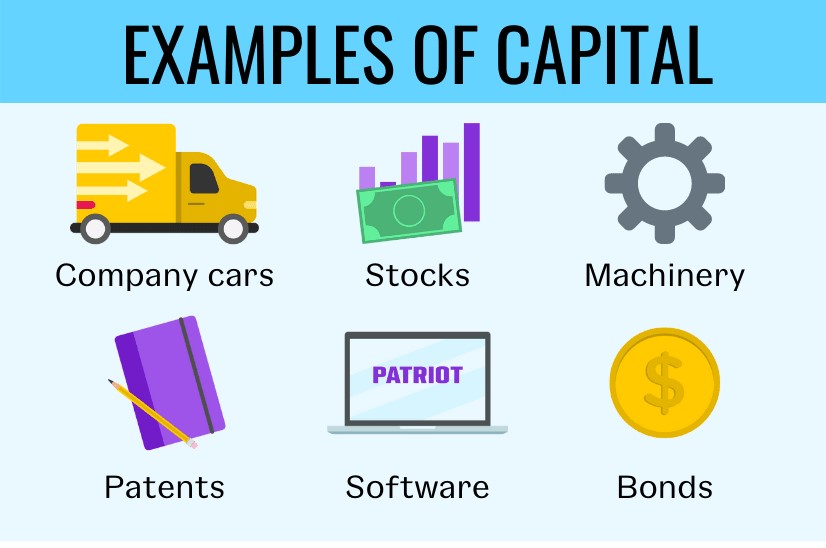
Capital, in a broader sense, can be referred to as anything that adds value or advantage to its owners. For instance, intellectual properties (patents), a company’s financial assets or a factory and machinery. In the business finance sector, capital may come from a company’s activities or via equity funding and debt. The typical sources of capital include corporations, private loans, personal savings, state/local/federal governments, venture capitalists, business operations or work, going public with an IPO, angel investors, and family & friends.
From the business perspective, companies use capital to pay for the continued products and services produced to generate profit. Two popular areas of capital allocation are building and labour expansions. A corporation or individual who invests capital hopes to receive a better return than the cost of the capital.
If you wish to study how capital in business works, you can take part in the Executive Programme in Business Finance from IIM Ahmedabad. With this course, candidates can learn about a company’s financial statements and analyse them. To have a better understanding of this programme, register with Jaro Education.
The use of capital
Capital is utilised by organisations to pay for the ongoing production of services and products. When it comes to global and national levels, economists analyse financial capital to figure out how it influences economic growth. Economists keep an eye on many capital measures, including personal spending and personal income from the Commerce Department’s Personal Income and Outlays reports. The quarterly Gross Domestic Product report also comprises capital investment.
A company’s capital structure always assesses financial capital and business capital. Banks in the United States are obliged by central banks and banking rules to retain a certain level of capital as a risk mitigation requirement (also known as economic capital).
Table of Contents
Structure of business finance capital or business capital
The balance sheet of a company allows for metric analysis of its capital structure, which is divided into liabilities, equity, and asset. The structure is defined by the mix.
Debt financing is a monetary capital asset that must be paid back over time via scheduled liabilities. On the other hand, equity financing, or the selling of stock shares, provides cash capital that is also reported in the balance sheet’s equity section. Debt capital often has lower rates of return and onerous payback restrictions.
To analyse business capital, some primary metrics are cost to capital, weighted average, return to equity and debt to capital.
Business finance capital :types
Business finance types have an integral role in shaping the financial strategies available to a company. Here are the three basic types of business finance capital that drive innovation and fuel growth.
Equity Capital
There can be several forms of equity capital. The typical differentiation is made between real estate equity, private equity and public equity. Usually, shares of stock in a company constitute private and public equity. The sole difference is that public equity is generated by listing the company’s shares on a stock market, whereas private equity is raised among a limited number of investors. Individual investors provide equity capital to a firm when they purchase stock. Of course, the most significant news in obtaining equity cash is when a business announces an initial public offering (IPO).
Debt Capital
Borrowing is one way for a company to get funds. This is debt capital, which may be received from private or public sources. For well-established businesses, this usually entails borrowing from issuing bonds or banks and other financial institutions. Credit card companies, online lenders, friends and relatives, and federal loan programmes may be sources of cash for small businesses starting on a limited resource.
To receive loan financing, businesses must have an active credit history, like individuals. Debt capital needs regular interest-bearing repayment. Interest rates differ according to the type of capital borrowed and the borrower’s credit history.
Individuals understandably perceive debt as a burden, while corporations see it as an opportunity, at least if the debt is managed properly. It is the only means for most firms to receive a large enough lump cash to pay for a substantial future expenditure. To prevent falling too deep, both firms and potential investors must keep a watch on the debt-to-capital ratio.
Bonds are a popular tool for companies to generate debt capital, especially when interest rates are low, and borrowing is cost-effective. According to Moody’s Analytics, corporate bond issuance by US companies would increase by 70% year on year in 2020. Later on, it was documented that corporate bond rates had fallen to a multi-year low of around 2.3%.
Working capital
It refers to a company’s liquid capital assets available for meeting daily commitments. It is calculated using the two evaluations listed below:
- Current Liabilities – Current Assets
- Inventory + Accounts Receivable = Accounts Payable
Working capital indicates a company’s short-term liquidity. It shows its capacity to pay its debts, accounts payable, and other commitments due within one year.
It is crucial to note that working capital is defined as current assets less current liabilities. A corporation with more obligations than assets may run out of working capital quickly.
Along with these types of capital, business finance also covers another type of capital called trading capital.
To run and generate successful returns, each business requires a significant amount of cash. The analysis of the balance sheet is essential for reviewing and assessing the business capital. Brokerages and other financial institutions use the term trading capital, which signifies a high volume of transactions daily. The amount of money allowed to a person or an organisation to purchase and sell various assets is called trading capital.
Investors might try to increase their trading capital by using various trade optimisation approaches. These strategies attempt to maximise capital utilisation by finding the optimal percentage of funds to invest in each trade. To be successful, traders must first calculate the appropriate financial reserves necessary for their investment methods.
What is capital in a business?
A company’s capital is the money it has available to finance its daily operations and future development. One source of capital is the revenues of its business.
An individual’s or a business’s capital assets may consist of long-term investments, real estate, short-term investments, automobiles and other belongings. A company’s capital assets may include warehouse space, expensive machinery, office equipment, merchandise and patents.
Many capital assets are illiquid, so they cannot easily be converted into cash to satisfy urgent demands. A company’s capital worth would comprise every item held by the company as well as all of its financial assets (less liabilities). However, an accountant overseeing the company’s day-to-day budget would only view cash on hand as capital.

*Patriot Software
What would you call capital?
Capital may be any financial asset that is used. Examples include the contents of a bank account, the proceeds of a stock sale, and the proceeds of a bond issuance. The proceeds of a company’s current activities are recorded as capital on its balance sheet.
What is the importance of capital in business finance?
To make a business work daily, capital is certainly the most crucial part. Here are various reasons why capital is essential for a company.
- Capital is required to pay employees’ salaries and relieve them of hard labour by indexing better machinery. It also helps the economy as a whole.
- It helps firms to purchase or acquire commodities and machinery. Machinery and infrastructure are required for firms to carry out their day-to-day production and operation.
- Capital can be used to purchase cutting-edge manufacturing technology and specialist tools, helping close the demand-supply gap. It will also aid in the company’s expansion by increasing output and enhancing quality.
Sources of business capital
Businesses obtain funds from a variety of sources. Some common sources of capital are listed in this segment.
Crowdfunding
It is a relatively new means of raising funds. You might seek the assistance of NGOs and social platforms that provide financial assistance to aspiring businesses. You may not even have to give any returns on the money or pledged shares in such cases.
Self-financing
Capital can also be obtained from the owner’s bank accounts and personal possessions. An entrepreneur might save money or sell personal assets to get funds for new or current organisations.
Sale of assets
Company assets might be sold to raise funds. Any disposable or surplus asset, such as land or equipment, can be sold to raise funds for the business.
Company shares
One can also obtain capital by selling company stock to the general public. Entrepreneurs can invite investors and raise funds from them. However, they need to provide shares of their firm to all investors based on their quantities.
Debts and Loans
Companies frequently obtain financing from NBFCs or public banks through bank loans. This enables them to jumpstart their firm and purchase necessary industrial gear. The payback and interest are paid out of the company’s profits.
Final Thoughts
Capital is an essential component of every organisation. It is in charge of ensuring the seamless operation of businesses and contributing to the nation’s economy. For their everyday operations, businesses use several capital structures, such as equity capital, loan capital, and working capital. Furthermore, a company’s net value is determined by its capital and capital assets. Working capital financing is an important study area for any organisation since capital investment is essential for its development and return on investment.
Are you interested in being a financial analyst for a reputed organisation? Consider participating in IIM Ahmedabad’s Executive Programme in Business Finance. With top-notch industry experts and faculty, candidates would get hands-on knowledge to evaluate expenditures and contribute to cost-optimisation projects throughout the 6 to 7 months course. Furthermore, the programme features live interactive sessions, quizzes & assignments, along with real-life case studies, which would push your career in a better direction.








